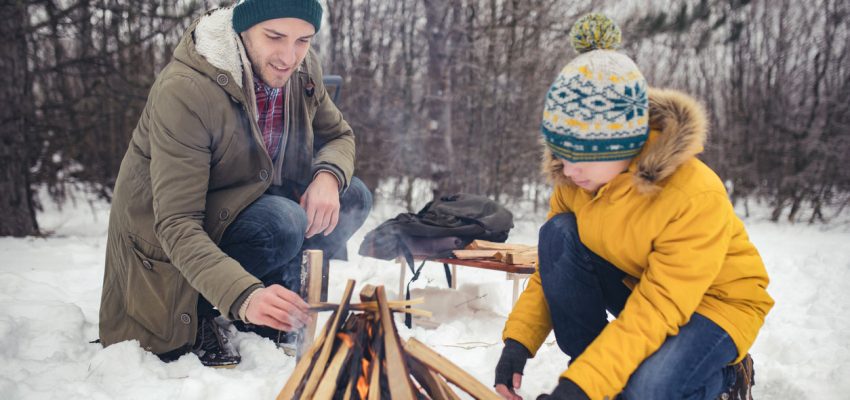There’s nothing worse than being wet and cold, and a fire is the perfect cure. It is vital to dress properly when venturing outdoors in cold weather. , Make sure you wear weather-appropriate gloves, warm clothes and a good pair of snowshoes for protecting your feet against cold.The trouble is, if it’s been raining or snowing, all the firewood and kindling will be soaking and covered in ice. If you’ve ever knelt over a pyramid of smoldering twigs, huffing and puffing while trying to light a fire, and getting smoke in your eyes, you know the struggle is real. As winter approaches, the consequences of being stranded without a fire can be drastic. Luckily, there are several solutions, kindly provided by Mother Nature, that will help you to light a fire in inclement weather and have you warm and cozy in no time at all.
Birch Bark
Birch trees are pioneers—they like to grow on the edges of forests where they can soak up the sun and grow quickly. Since they shoot up so fast, they don’t have time to form thick bark which can protect them from insects and disease. Instead, they infuse their bark with a strong oil that also happens to be flammable. Using birch bark will help you start your fire even in the wettest conditions.
When harvesting birch bark to start your fire, opt for recently fallen branches. Trees which have started to rot have lost much of their flammable oil. It is possible to harvest birch bark responsibly. Only peel a little of the outer bark off, never the inner bark as this will expose the tree to attack from insects. Only harvest bark from trees with trunks wider than 6”. Peeling off too much of the birch bark can damage and even kill the tree.
Pine Trees
If you’re struggling to make a fire, a pine tree is a gift from the gods. Every part of the tree from pine needles to pine cones contain resin which burns quickly an easily. Pine resin is made from turpene (the main ingredient of turpentine) which makes it so flammable.
Pine needles are flammable and make excellent kindling. Searching under the tree, near the trunk, will yield needles that are still dry as the tree’s foliage offers protection from the weather.
Scrape some resin off the tree to use as a firelighter. Pine resin is highly flammable and can help you to start a fire in wet conditions. If you find a dead pine, the wood in the center of the tree, known as fatwood or meat wood, is steeped in pine resin and will burn well too. Look for grey, rotting stumps and remove the fatwood from the center.
Horseshoe Fungus
Equipped with a hard outer shell, the horseshoe fungus (also known as the tinder fungus) harbours a flammable center that works well as a firelighter. The fungus itself will smolder for several hours, allowing you to move the fire from one campsite to another.
Here’s a handy video showing you how to use the natural firelights we’ve discussed in this article.
Want more bushcraft and campfire cooking videos? Subscribe to the Greenmoxie YouTube Channel.




